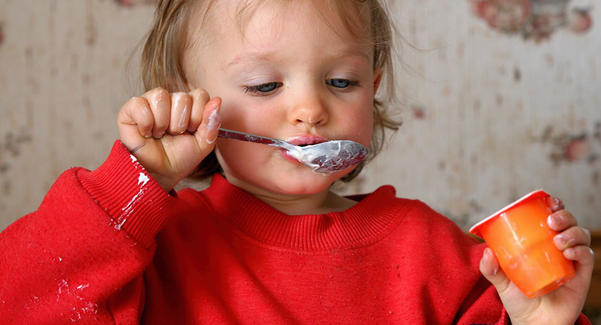
The SOS approach to feeding
Created by Dr. Kay Toomey, a paediatric psychologist who has worked for over 20 years with children who don’t eat, in conjunction with colleagues from a range of disciplines, the Sequential Oral Sensory (SOS) approach to feeding is designed to assess and address all the factors involved in feeding difficulty. A transdisciplinary program based on the idea that the child is always right, the SOS Feeding approach looks at the child and works out the reason for their feeding difficulties and bases the treatment program on that. The core concepts of SOS Feeding approach are that:
- Traditional myths surrounding eating can interfere with the understanding and treating of feeding problems
- That Systematic Desensitisation should be the first method used when treating a child with feeding difficulties
- That following the usual route of developmental feeding milestones is preferable
- Allowing food choices to naturally achieve sensory and oral skill progression
The SOS Feeding approach debunks a number of accepted myths surrounding mealtimes and feeding including that ‘if a child is hungry they will eat. They will not starve themselves ‘(Mason et al., 2005.) and that eating is easy and the body’s first priority. It introduces the idea that eating is the most challenging sensory skill to master and when we put pressure on our children to eat, we cause them to feel anxious, which releases adrenalin that supresses their appetite and puts the body into react rather than learning mode.
The SOS Feeding approach focuses on systematic desensitisation which breaks down each part of the eating process into steps: Tolerates, Interacts With, Smells, Touches, Tastes and then finally Eats. Each one of those steps is then broken down again so that every tiny progression is mastered before moving forward. Children receive positive reinforcement for every level of food interaction.
The approach also focuses on social modelling and the ritual of eating and meal times. Children are encouraged to sit and remain at the table for the duration of the meal. It is recommended that SOS Therapy is presented in the form of either group or individual, 12 week, 45 minute sessions with an Occupational Therapist to manage the sensory aspects and a Speech Pathologist to manage the oral intake and management. A consistent plan for each session begins with five minutes of sensory preparation, transition, starting routine, feeding and clean up. Children are NEVER forced to eat. The SOS approach to feeding may be an appropriate therapy for your infant, child and/or adolescent with or without a developmental delay and/or disability if they:
- Have a restricted range of foods they can tolerate
- Refuse entire categories of food texture/nutrition groups
- Have to eat a different meal from the rest of the family
- Are underweight or at risk of becoming underweight due to limited food intake
- Find mealtimes distressing
- Are transitioning from having a feeding tube
We asked Heidi Hoskings, a Speech Pathologist trained in the SOS Feeding approach for her opinion:
How successful do you find the approach?
SOS is a very effective way to help children to eat more variety and thus volume in their diet. Ideally the program runs weekly sessions and has parent training involved to help carry over what is learnt in the group, to home. Results range from a child being able to handle smelling a particular food, to being able to handle food cut in different ways, to a child being able to touch or eat different textures. Some children make gains very quickly, whereas others who may have been on a nasogastric tube or gastrostomy may take much longer to get to eating more variety.
How long do you need to persevere before you start seeing results?
SOS works by desensitising a child to the different sensory properties of foods in very small steps. You should be able to see some success fairly quickly. It might be that your child can handle just looking at a food for a couple of seconds or that they will touch an undesired food with a fork or even that they will touch it by throwing it into the bin. The therapist should be able to help you identify the success your child is having, by pointing out these small steps. This way, you will be able to see that they are moving closer towards eating the food, the best success!
Is there any type of child/diagnosis this therapy works best for?
SOS works well for any child that is struggling with the sensory properties of food, be it smell, taste, texture or even sight and sound. This is particularly useful for children with ASD but also many other diagnoses, particularly those who have had a traumatic history with feeding early on. SOS also works for those children who have fallen into habits, which affect the type or amount of food they eat. As this program focuses on appetite, it is also useful for children who are failing to thrive or who are never very hungry, thus making it hard to introduce new foods. Most importantly, it helps to educate any parent that has stress around mealtimes, which could possibly be every parent!
Do you use this approach in isolation or does it work well together with other therapy?
Because the SOS program is quite intensive, it is best to just focus on feeding goals through this. It covers therapy with the child in the group, so the therapist can see exactly what the child is doing and it also allows time to educate the parents on how to continue this on further at home.






